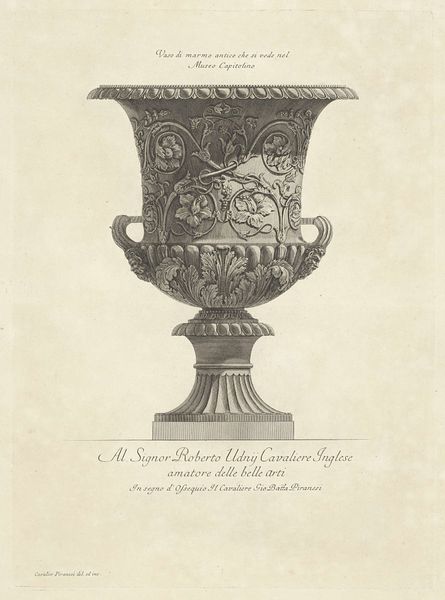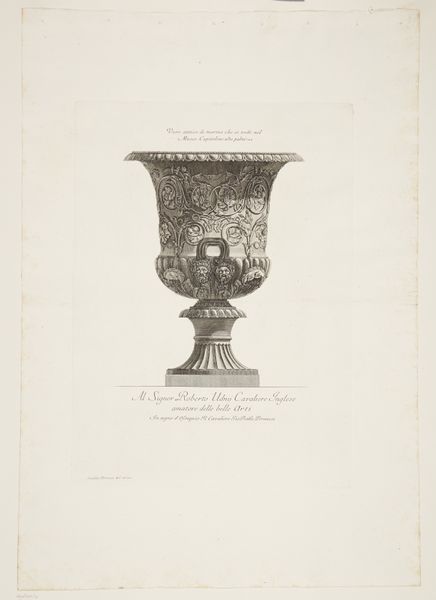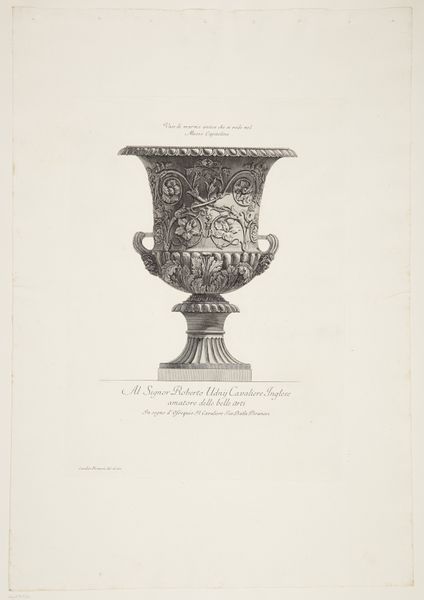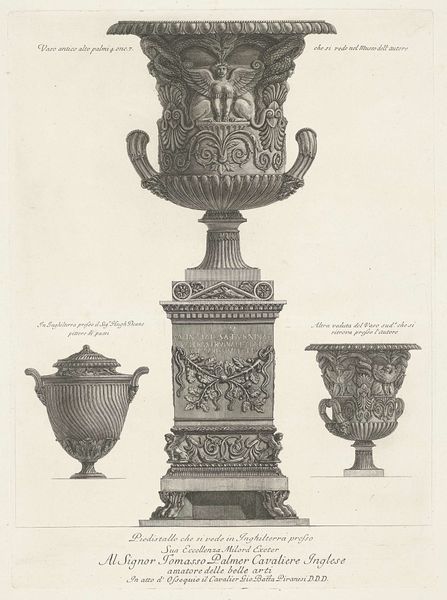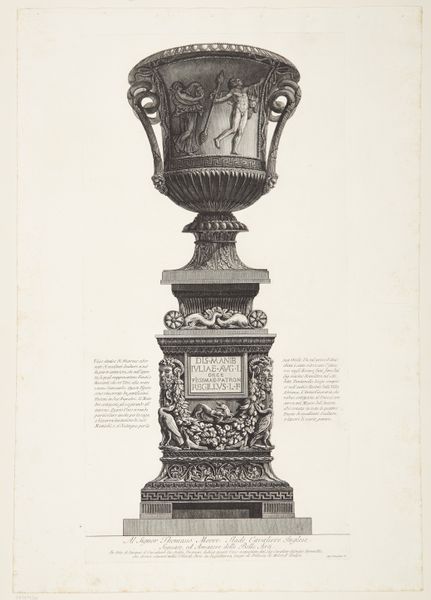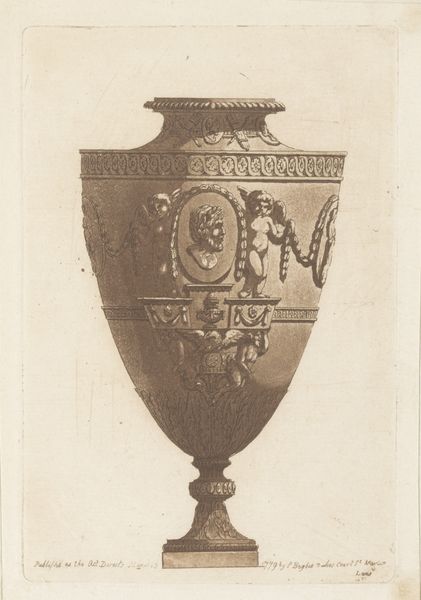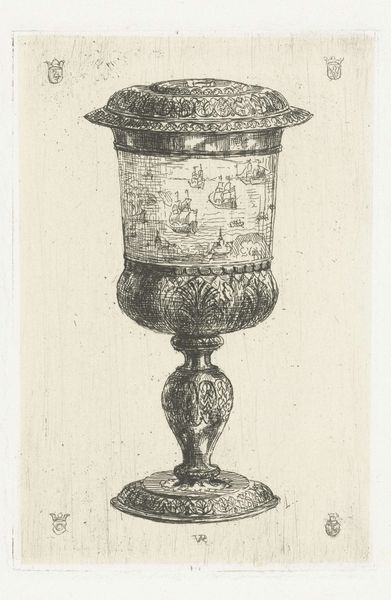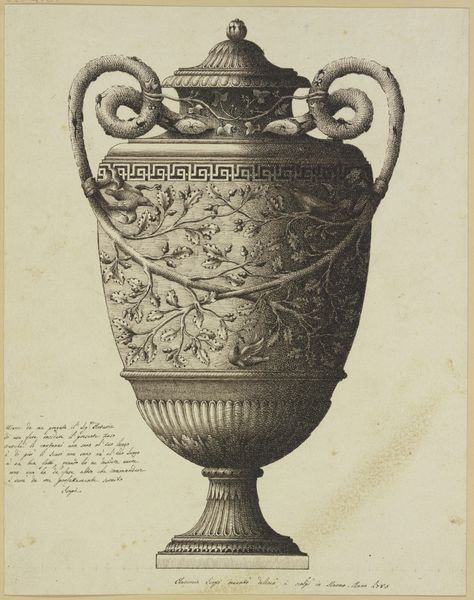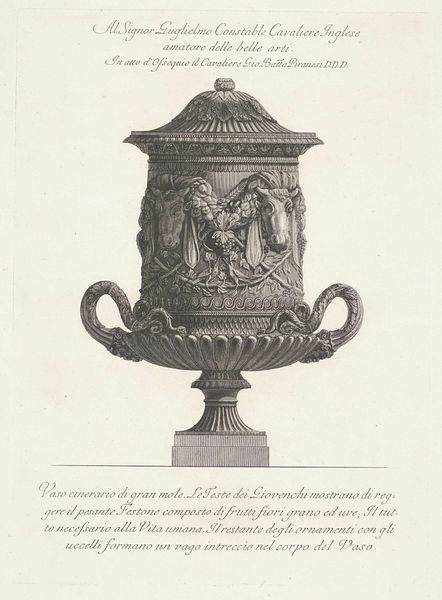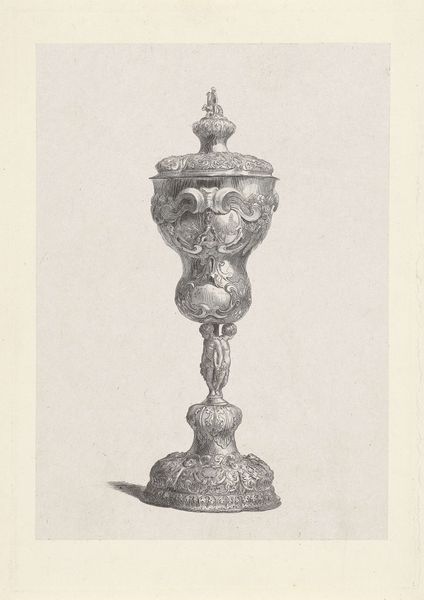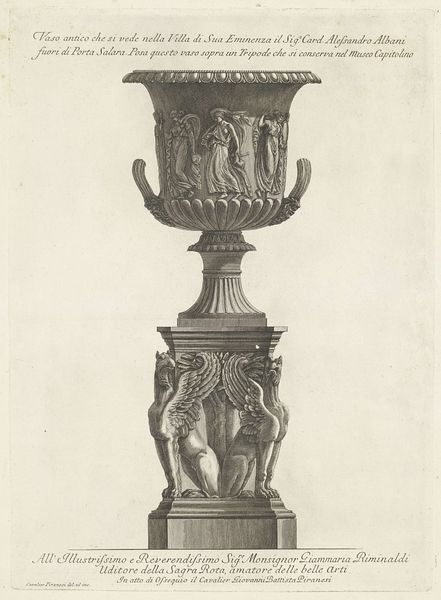
print, engraving
#
neoclacissism
# print
#
old engraving style
#
geometric
#
history-painting
#
decorative-art
#
engraving
Dimensions: height 530 mm, width 386 mm
Copyright: Rijks Museum: Open Domain
Curator: Here we have a print titled "Antieke vaak," which translates to "Antique Vase," dating back to 1778, crafted by Giovanni Battista Piranesi. Editor: My first impression? Overwhelmingly ornate. Every surface seems to be teeming with detail—vines, masks, even those tiny loops I don’t know what to call! It feels…theatrical, almost a stage prop. Curator: Piranesi was deeply immersed in neoclassicism, drawing inspiration from classical forms, but he also questioned and transformed them. The inscription on the print is dedicated to Roberto Udny, an English Knight and patron of the arts, suggesting a dialogue between Italian and British aristocratic taste. Editor: Absolutely, there's a British sense of grandeur… though perhaps through an Italian lens? Those decorative arts served to reinforce power, prestige... but the vase itself, what could it possibly have held? Dreams? Ashes? A terrible salad? Curator: Well, it reflects the 18th-century obsession with antiquity and the Grand Tour, where wealthy Europeans acquired art and artifacts as symbols of their cultural sophistication. This vase embodies the ideal of returning to an imagined golden age of classical perfection—an ideology ripe for critique. It suggests a linear progression narrative where classicism sits at the pinnacle of Western art. Editor: A bit stuffy for my taste if I'm being honest, all that pomp can hide more than it reveals, and this ideal golden age tends to erase those left out. I imagine that detail that looks like small loops is egg-and-dart decor. I imagine how heavy this marble vase would be! And think of the sculptor's touch, tracing every little groove, carving out a lion's mane one detail at a time. All of it rendered so meticulously into a single print! It really showcases incredible artistic control, despite how not very 'rebellious' the style might appear to a contemporary viewer. Curator: Precisely. Analyzing its representation as a print invites interrogation into how historical narratives are constructed and consumed. The artwork acts as a potent marker of class and cultural authority. Editor: Definitely food for thought, all the labor involved to serve the one percent of the eighteenth century, I have gained a new found appreciation. Now, looking at the dark lines mimicking shadow, this engraving really captures texture... quite clever. Curator: A testament to the layered historical meanings that objects—even images of objects—carry and communicate across time. Editor: Indeed! And maybe a reminder not to underestimate what vases whisper to us…if only we dare listen.
Comments
No comments
Be the first to comment and join the conversation on the ultimate creative platform.
